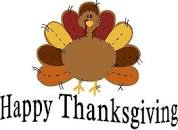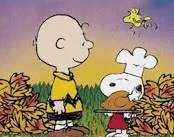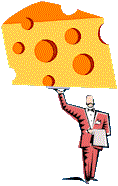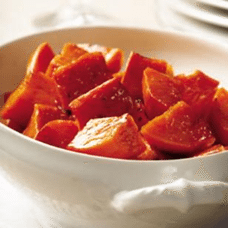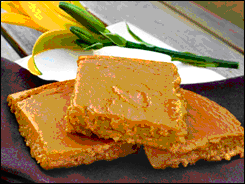Over 200 years ago President Abraham Lincoln
declared the fourth Thursday in November the national day to celebrate
Thanksgiving. In 1941 it became a national holiday.
In 1621 the Pilgrim’s had their first successful
corn harvest, and a celebratory feast was organized. They invited the Native
American allies and had the first celebrated thanksgiving.
Every year families gather on Thanksgiving day to celebrate family, giving to others and what they are most thankful for.
But it is also that time of year, when most of us tug a little harder at our belt buckles – a feat especially
difficult on this post-Thanksgiving Friday.
So, the turkey day leftovers will soon be
overflowing, and the holiday sweets have already started to jam your workplace
and mailbox. The next month will be filled with family gatherings, cocktail
parties, cookie exchanges and elaborate feasts. Simply put, those trying to
battle the bulge will struggle mightily.
If you are concerned about nutrition during this
time, let the tips and recipes in the up and coming newsletters help you stay
realistic about healthy nutrition, yet enjoy the season!! Food is part of our culture, relax,
celebrate, but stay focused on your health and nutrition goals.
—————————————————————————————————–
Quote for the month
“Physical activity is the currency with which you pay for food.”
—————————————————————————————————–
FUN FACTS:
Did You Know??
- Almost 20% of all cranberries consumed in the United States per year are eaten on Thanksgiving.
- Over 85% of Americans consume turkey on Thanksgiving.
- About $3 billion dollars worth of turkeys are sold for Thanksgiving
- Benjamin Franklin wanted the national bird to be a turkey.
- Turkeys can drown if they look up when it is raining.
- A typical Thanksgiving dinner of turkey, stuffing, mashed potatoes, gravy,
sweet potatoes, cranberries, bread, pumpkin pie and one glass of wine has
3,550 calories.
—————————————————————————————————
TALKING TURKEY – KEEP IT SAFE
Sure to be the staple of many holiday meals, turkey is a great addition to your diet. It’s low in fat and high in protein, and a good
source of iron, zinc, phosphorus, potassium and B vitamins. Here are some tips for turkey safety:
A frozen turkey can be bought months in advance and stored
in the freezer. Allow ~24 hours of defrost time for every 5 lbs of turkey. A
20-pound turkey takes 4-5 days to thaw! Never thaw turkey at room temperature.
Stuff your turkey just before you place the bird in the
oven. Allow ½ to ¾ cup stuffing per lb of turkey. The stuffing
must be cooked to a minimum temperature of 165 degrees to be safe.
To roast the perfect turkey, place the bird in a shallow
pan. Insert a meat thermometer into the inner thigh of the bird and roast it in
a pre-heated oven set at 325 degrees. Your turkey is cooked when the
thermometer in the inner thigh reads 180 degrees, and the juices run clear. Be
sure the thermometer is not touching any bones.
On that note…. Overeating on Thanksgiving…
Remember, it takes 3,500 calories to gain a pound. Most
people almost or actually do gain 1 pound from just one meal. Sounds crazy, huh?
Thanksgiving food tends to be exceptionally high in fat, and
body works differently with excess fat than it does with excess carbohydrate and protein.
When we overeat carbs and protein, the body’s initial response is to use the majority of the extra food for energy, storage, and
building of tissues. Smaller amounts are stored as fat. Excess dietary fat is preferentially stored as body fat.
Also, fat consumption does not cause as great an increase in metabolism as carbs and protein as these calories are more easily stored.
But keep in mind that consistently overeating carbs and protein will also lead to weight gain.
HOLIDAY SEASON TIPS
Don’t go to the Thanksgiving dinner hungry: we often eat faster and more when we are
hungry – therefore eat a wholesome breakfast and lunch on the day to avoid overeating at dinner time.
Thanksgiving dinner is not an all-you-can-eat buffet: Fill your plate half with vegetables,
one quarter with a lean meat and the rest with a starch of your choice. Eat slowly and stop when you are full.
Turkey- go skinless: choose your 4-oz turkey portion skinless to slash away some fat and cholesterol.
Save your appetite for the side dishes and desserts.
Make a conscious choice to limit high fat items: For instance, mashed potatoes are
usually made with butter and milk; green bean casseroles are often prepared
with cream of mushroom soup, cheese and milk and topped with fried onions;
candied yams means cream, sugar and marshmallows. Limit yourself to a smaller
helping size. Moderation is the key to these challenges.
Drink plenty of water: alcohol and coffee can dehydrate your body. Drink calorie-free
water to help fill up your stomach and keep you hydrated.
One of the best tips – avoid having too many leftovers as this would mean extraordinary calories multiplied:
SOOOOOO….. Help the Hungry:
Although the US is the wealthiest nation, 13% of the population live in poverty and hunger.
The easiest way to help, is to donate extra food to national nutrition programs, such as food banks. It may not
solve the problem, but it will definitely help.
==============================================================================
REVISING RECIPES
High fat food items are typically traditional for the
holiday celebrations. For instance, mashed potatoes are usually made with
butter; green bean casseroles are often prepared with cream of mushroom soup,
cheese and milk and topped with fried onions; candied yams are loaded with
cream, sugar and marshmallows.
Recipe calls for: Substitute:
1 whole egg 2 egg whites
Sour cream fat free sour
cream or plain light yogurt
Milk skim
or 1% milk
Ice cream low
fat frozen yogurt
Heavy Cream 1:1 ratio of
flour to or 1% skim milk
Whipping cream chilled evaporated
milk, or coolwhip
Cheese, butter or cream of mushroom All these come in lighter versions
If you cannot control the ingredients that go in to a dish, simply limit yourself to a smaller helping size.
Again moderation is the key.
==============================================================
Recipe of the Month:
Maple Roasted Sweet Potatoes
Ingredients:
2 1/2 pounds sweet potatoes, peeled and cut into 1 1/2-inch
pieces (about 8 cups)
1/3 cup pure maple syrup
2 tablespoons butter, melted
1 tablespoon lemon juice
1/2 teaspoon salt
Freshly ground pepper, to taste
Instructions:
Preheat oven to 400°F. Arrange sweet potatoes in an even
layer in a 9-by-13-inch glass baking dish. Combine maple syrup, butter, lemon
juice, salt and pepper in small bowl. Pour the mixture over the sweet potatoes;
toss to coat. Cover and bake the sweet potatoes for 15 minutes. Uncover, stir
and cook, stirring every 15 minutes, until tender and starting to brown, 45 to
50 minutes more.
Makes 12 servings, ½ cup servings each.
Nutritional Content Per Serving:
96 Calories, 2 grams of Fat, 5 milligrams of Cholesterol,
118 milligrams of Sodium, and high amounts of Vitamin A and Vitamin C.
———————–
BONUS DESSERT RECIPE
PUMPKIN CUSTARD PIES
(serves 6)
1 can, 16 oz., pumpkin
1/2 cup prunes, pitted and finely chopped
1/4 cup frozen apple juice concentrate, thawed
1/4 cup frozen orange juice concentrate, thawed
2 tsp. margarine, reduced calorie
1 cup evaporated skim milk
1/2 cup fat-free egg substitute
1 Tbsp. grated orange peel
2 tsp. pumpkin-pie spice
8 mini (3 1/2 inches in diameter) pumpkins (called Jack-be-little pumpkins)
In a med pan, stir together the pumpkin, prunes, apple, orange juice and margarine. Simmer for 15 mins,
stirring frequently. Transfer to a food processor and add milk, egg subs, orange peel and spice. Process until smooth.
Cut off the tops of each pumpkin about 1 inch down. Scoop out the seeds. Place
the shells in a 13″ X 9″ baking dish. Bake at 3500 F for
about 30 mins or until the flesh is tender but the shells are not in danger of
collapsing. Spoon the custard mixture into the shells. Bake at 350 degrees for
about 30 minutes or until a knife inserted near the center of custard comes out clean.
Nutritional information per serving:
Calories: 106 Fat: 1g
Cholesterol: 1 mg Sodium: 74mg
Fiber 2g Carbohydrate: 18g
